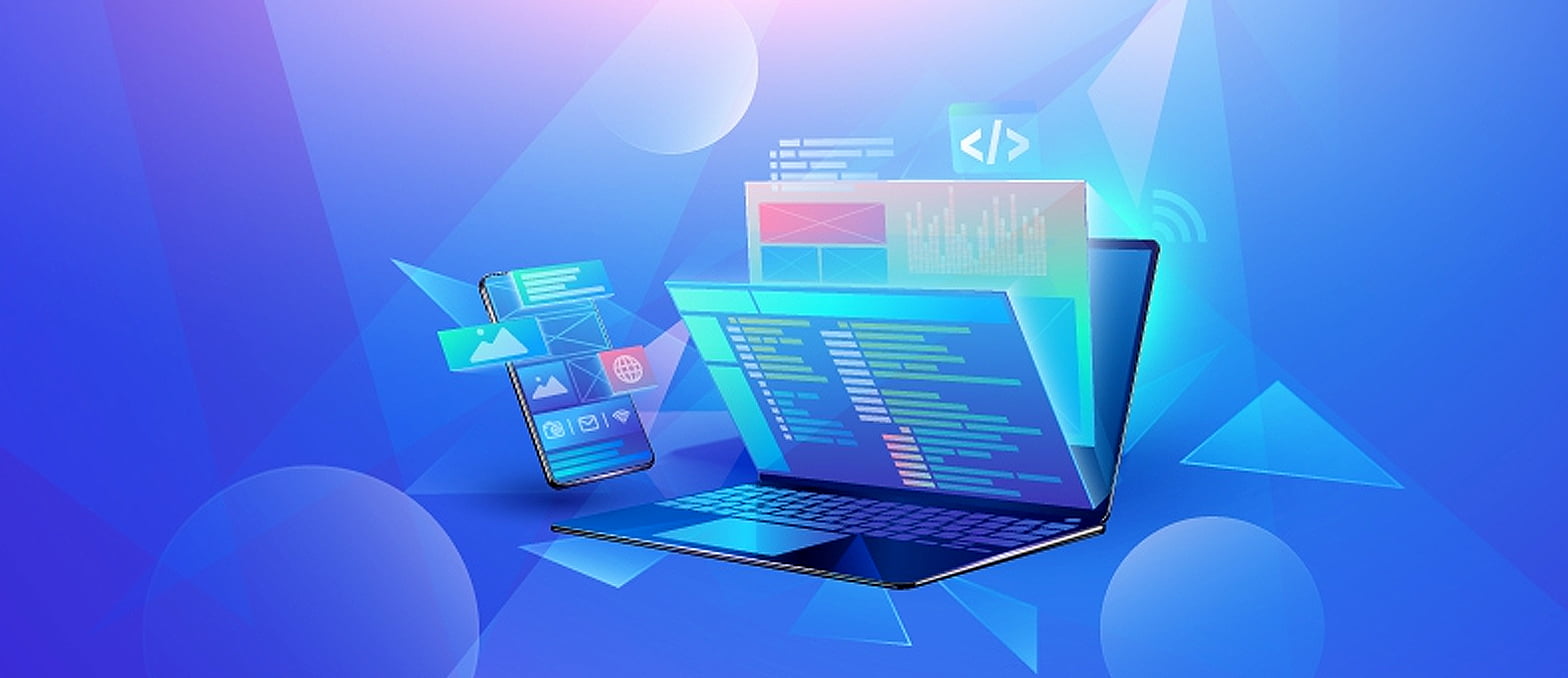A key differentiator for firms is customer happiness. This is particularly true in the finance and banking industry. Usually, financial processes are intricate and multi-step. Even though it takes a lot of time and work to streamline the process, businesses can guarantee a flawless client experience. The banking app interface should be simple, involving financial transactions, cash withdrawals, or loan applications. The lengthy completion time of the online banking interface is a significant contributing factor to this desertion.
The global digital banking market is projected to reach a volume of $53.5 billion by 2030.Businesses must understand the customer journey from the moment the onboarding choice is made to guarantee that customer satisfaction is appropriately considered. Businesses can improve their chances of gaining new clients, cultivating existing ones, influencing referrals, and eventually boosting earnings by closely examining users’ interactions with the mobile app. 59% of people want digital banking to offer simple tools and resources for learning how to manage money. This shows the importance of banking app interfaces to offer money saving features.
In this blog, we have examined the various features to keep in mind while developing a banking app interface.
Table of Contents
The Role of Banking Apps
Banking apps enable customers to get banking services at their fingertips. Simplifying the complicated banking process that involved a lot of paperwork was time-consuming. However, traditional banking apps offer generic services like transferring payments from one account to another or checking the bank balance. Consumers today seek solutions that provide multiple services in a single platform. According to statistics, 71 percent of consumers prefer to manage their bank accounts through a mobile app or a computer. Today’s banking app interface must be feature-rich to enable and aid in earning money. Here are some of the must-have features in a banking system interface:
Automated Savings Tools
From a technical standpoint, automated methods for saving and spending are straightforward. You can segregate your funds into a single account using them as digital envelopes. However, the behavioral science linked to the positive impact of imagery is where saving tools’ true power lies.
You can arrange many savings objectives under a single account using savings tools. Individualized savings saving tools can be made for objectives like a trip, new furniture, or a car. It may be simpler to envision yourself reaching your goals when clearly stated in your savings account.
Instead of setting money aside for an unknown lump sum, you’ll feel more empowered to commit your hard-earned money to a new car fund (or whatever goal you’re saving for). Your funds may be broken down to show you where every dollar goes. You may become more motivated to continue saving as your finances increase.
Real-Time Transactions Notifications
A key component of your communications strategy should be updating your users on all of their transactions, no matter how minor. Keep users informed at all times by providing them with transactional updates while on the go. By offering end users utility and raising their awareness of spending patterns, these valid, real-time notifications contribute to the everyday development of client relationships. This banking app interface feature also help to improve brand perception and foster brand trust.
When a transaction clears or doesn’t process, send these alerts. Make advantage of them by alerting consumers when a payment, wire transfer, cash withdrawal, or mobile deposit occurs. Users may go about their day with peace of mind, knowing their payment was successful after receiving a push notice verifying a transaction. Alternatively, a real-time notice will keep users informed and prepared to take the necessary action if a payment is refused, a check is on hold, or a user has exceeded their overdraft limit.
Transactional alerts improve the user experience by integrating various channels and more effectively tie together digital and physical customer “touch points” significantly. This improves the general consumer experience and may boost trust in your company.
Budgeting Tools and Expense Categorization
Users of budget planner apps can set aside particular sums for upcoming costs in various categories. For example, if a user had $5,000 to spend on planning an event, they would enter the total and allocate it to multiple expenses such as entertainment, food, and décor. The program ensures that users don’t go over their predetermined limitations. Users can also use this online banking interface feature to budget regular revenue, such as a monthly paycheck. In this manner, consumers can decide to invest a portion or save automatically rather than squandering all of their money. Budget planners assist in developing and following a plan that aligns with financial objectives.
Income, expense, and transaction data are processed using advanced analytics to generate tailored advice and suggestions that encourage better spending and saving practices. Additionally, analytics can evaluate progress over time, identify budget issue areas, and offer money-saving suggestions based on behavior trends. Expense categorization divides spending into grocery, meals, transportation, and entertainment, allowing consumers to see exactly where their money is going.
Bill Payment Reminders
Our hectic schedules might make it challenging to keep track of multiple bills and their due dates. Not paying bills on time results in late fees, lower credit scores, and unnecessary anxiety. By monitoring payment schedules, promptly reminding users, and helping them manage their money more skillfully, the payment reminder systems help users overcome these issues. This banking system interface also promotes improved budgeting and saving habits, facilitating easier financial management. A written or verbal letter reminding a customer to pay an overdue invoice is a payment reminder. Successful accounts receivable teams frequently use payment reminders to address annoying payment delays.
It can be beneficial to use payment reminders because they successfully remind consumers who forget to pay their bills. A payment reminder can at least start a discussion about the problem when a customer cannot pay because of financial constraints. Payment reminders are essential for AR teams to manage their accounts because non-payment can negatively impact cash flow.
Cashback and Rewards Programs
The addition of rewards to the banking app interface provides a more convenient and streamlined way to earn rewards, even though banks have long offered cash back and other incentives for using their debit and credit cards.
For instance, Bank of America now provides a platform called BankAmeriDeals within its mobile app solely focused on cash-back rewards. Users can peruse all of the shops and offers in the app that qualify for cash-back incentives when they use a BofA debit or credit card to make purchases. When customers are already purchasing, this makes it simple for them to quickly check what rewards they qualify for to optimize their cash back. Users can also view all of their cash-back earnings using the app.
Other banks might provide points that can be redeemed on a mobile app after you spend money on specific purchases. U.S. Bank has made it simple for its clients to use their points at any time and from any location. Consumers only need to use the bank’s mobile app to access the rewards tab, where they may exchange points for travel, gift cards, products, credit, and other items.
No-fee or low-fee accounts
The Power of No Fees: Traditional banking often comes with monthly maintenance fees, ATM fees, overdraft fees, or minimum balance requirements. These costs add up and can be a barrier to saving. However, the online banking interface that offers no-fee or low-fee accounts eliminates many of these burdens. For customers, more of their money stays in their account, leading to a healthier savings balance and fewer unnecessary financial pressures.
Behavioral Impact- Removing the friction of fees assists users to feel more in control of their finances and safe about financial planning. This does contribute to financial freedom, making it easier to stay on goals such as saving or budgeting.
Personalized Financial Advice and Insights
Tailored financial guidance: many banking applications have used AI and machine learning algorithms to identify one’s spending and financial behavior patterns so it can be directed to advise in a specific way. The advisory could vary from better budgeting methods to methods of decreasing debt, improving savings for retirement, or simply improving investment options.
Practical Advice for Money Management: These insights help users make smarter financial decisions by showing them areas where they might be overspending or missing opportunities for saving. When financial advice is specifically tailored to a user’s needs, it feels more actionable and relevant, which often leads to better financial outcomes and savings.
P2P (Peer-to-Peer) Payments
Easy and immediate money transfers from person to person using Venmo, Zelle, and PayPal payment services that now can be embedded into banking applications; no-fees structure mostly for P2P transfers-no fee or small fee to move money between people; no extra cost to move money between account holders.
Saving Money on Transactions: Unlike bank transfers or wire services, which are usually expensive (especially for international transfers), P2P systems save users money by allowing them to transfer funds with no or minimal cost. For customers sending money to others, whether for bills or group activities, these services help avoid hidden charges.
Credit Score Tracking and Monitoring
Access to Your Credit Health: Most banking system interfaces allow you to view your credit score free of charge and track changes, as well as receive advice on how to improve it. You can use your credit score to make informed decisions about whether to apply for a loan, mortgage, or credit card.
Money-Saving Benefits: A good credit score can translate into lower interest rates on loans and credit cards, which means you’ll save significant amounts of money over time. By actively monitoring and improving your credit score through insights provided by your banking app, users can ensure they are paying the least amount of interest possible.
Investment and Retirement Planning Tools
Low-Cost Investing: Many banking apps offer investment options that enable users to invest in stocks, bonds, or other securities with minimal fees. Such apps may even provide robo-advisors, which automatically manage portfolios according to the risk tolerance and goals of the customer, without charging the high fees of traditional financial advisors.
Saving for the Future: These help users plan their retirement and increase their wealth, making it easy to save for future goals like retirement, a new home, etc. This kind of automation with contributions or suggests strategies for better returns enables compound interest and higher savings, hence financial security in the near future.
Digital Wallet and Contactless Payments
As more merchants accept cashless payment options, digital wallets are becoming more and more common. Nearly 60% of consumers had used a digital wallet in the previous month, says a recent poll.
A bank, a smartphone manufacturer, or a third-party business could offer a digital wallet. Since sending money to someone via a digital wallet typically carries no fees, it enables users to store money digitally and make payments using their cellphones. Here are a few typical examples:
Although many well-known digital wallets aren’t offered by banks directly, banks can increase customer accessibility to digital wallets by integrating third-party services into mobile banking apps or by making their bank accounts compatible with digital wallets.
Digital wallets facilitate payments, but they may also make it simpler to fall victim to scams. Make sure you only send money and make payments to people you can trust because in many circumstances, all you need to confirm who you are sending money to is their phone number or email.
Enhanced Transparency and Financial Stability
It’s simple to lose sight of where your information is going, what it’s being used for, and how you’re being charged with all the subscriptions, applications, services, and accounts we’re connected to. However, you may track and manage that data with the aid of mobile banking apps.
For instance, Wells Fargo’s app has several features that allow users to have more control over their bank details and offer suggestions to increase security. Users may keep track of linked accounts, recurring payments (such as subscriptions), and the devices that are attached to their cards.
Additionally, a lot of banking apps provide information about the sharing of your data. For instance, the Security Center page of the Bank of America app allows users to identify which third parties have access to their data. Increased openness about the storage and use of their data can help consumers be on the lookout for any unusual activity and foster confidence between them and their institutions.
Integration with Discounts and Deals
Exclusive Discounts: Many banking apps are integrated with discount programs, giving users access to exclusive deals or cashback offers for shopping, dining, or travel. Some banks have partnerships with retailers, offering customers discounts when using their debit or credit cards through the app.
Saving on Daily Purchases: These bundled offers encourage customers to use their cards and banking services more often, rewarding them with money-saving offers that make daily purchases cheaper.
Financial Goal Setting and Tracking
Organized Financial Planning: Banking apps allow users to set specific financial goals, such as saving for a vacation, building an emergency fund, or paying off debt. The app tracks the goals, and the user can see how much they have progressed.
Motivation to Save: Having a tangible goal and tracking progress can boost motivation to save. As users see their progress toward a goal, they are encouraged to continue saving, ultimately leading to greater financial discipline and accomplishing their objectives.
Overdraft Protection Features
Protection from Overdraft Fees: A checking account will be protected through overdraft by allowing users to link a second account, say a savings account or credit line, to cover any overdraft. Users, therefore, can save money by avoiding overdraft fees and achieve financial stability.
Financial Missteps Prevention. Overdraft protection will prevent accidental expenses from creating penalties and prevent embarrassment or hassle when a check bounces or payment is rejected because of inadequate funds. Customers can feel confident knowing that such financial mishaps will not spring any unexpected overdraft charges.
Conclusion
As collaborations with fintech firms continue to grow and mobile releases keep coming out regularly, you can expect your mobile banking app to only get better at handling your finances. More sophisticated features are falling behind in terms of offering consumers sufficient services. Predictive analytics and budgeting tools are two features that could be improved while developing banking app interface.
The fact that not everyone can use mobile banking is another obvious flaw. Mobile banking usage is more prevalent among households with better incomes and educational backgrounds. Banking technology may advance to meet the demands of people with lower incomes and educational resources. Remember that a wide range of options are available; each bank’s app offers different capabilities. The top mobile bank apps are propelling new developments in digital banking. Since these apps are so tightly linked to saving money and managing your finances in general, what a bank offers through its app can have a big impact on where someone chooses to bank.
A3Logics, the leading fintech app development company, can help you design the perfect banking app interface to ensure that you get new customers and also help them save money. This helps in boosting customer retention and loyalty rates. Partner with the leading mobile app development company now to make your banking app interface that helps consumers save money.
FAQs
How can Banking App Development interfaces help customers save money?
Banking App Development interfaces can help customers save money by providing tools and resources such as budgeting and expense tracking, savings goals and automatic savings, cashback rewards and discounts, interest rate calculators, and credit score tracking and alerts.
Are Banking App Development interfaces safe and secure?
Yes, Banking App Development interfaces are designed to be safe and secure. Banks invest heavily in security and use advanced encryption technologies to protect customers’ sensitive information.
Can Banking App Development interfaces replace traditional banking services?
No, Banking App Development interfaces cannot replace traditional banking services entirely. While they provide customers with an enhanced banking experience, they cannot replace traditional banking services’ personalized services and expertise.
What should customers look for when choosing a banking app?
Customers should look for banking apps with robust features and functionality, such as budgeting and expense tracking, savings goals and automatic savings, cashback rewards and discounts, interest rate calculators, and credit score tracking and alerts. Additionally, customers should ensure that the app they choose is secure and reliable and has a user-friendly interface.
Can Banking App Development interfaces help customers improve their financial literacy?
Banking App Development interfaces can help customers improve their financial literacy by providing them with educational resources, such as financial articles, tutorials, and quizzes. These resources can help customers better understand economic concepts and make informed financial decisions.
How can I ensure that my banking app is secure?
Choose an app from a reputable bank or financial institution to ensure your banking app is secure. Additionally, you should use strong passwords enable two-factor authentication, and avoid using public Wi-Fi networks to access your app. You should also regularly update your app and device’s operating system to ensure you have the latest security features and patches.






